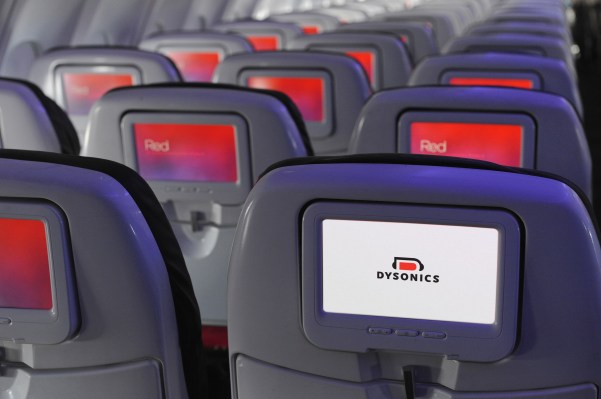Here’s a random pet peeve: When I’m traveling, I always kick myself for watching movies on mediocre in-flight entertainment systems — we all do it, but there’s something wrong about squeezing spectacular special effects into a tiny screen and allowing half the dialogue to get drowned out by the engines.
Well, Virgin America’s Red system is already a step above that, and the experience is getting even better — the airline announced a new Android-based version of Red, which will include surround sound technology from startup Dysonics.
I spoke to Virgin America CTO Dean Cookson, as well as Dysonics co-founder and CTO Robert Dalton Jr., about what this partnership means for the in-flight experience. In a surprising analogy, Cookson said that just as the “consumerization of IT” means that everyone expects better tech at work, travelers now expect better tech on planes, which puts pressure on Virgin America to innovate. At the same time, the airline also has to be selective.
“Airlines in general are always looking to be as economical as possible, that’s one of the realities one of the industry,” Cookson said. “So we have to identify what will be the things that will really drive the guest experience, something somebody will notice and will be impactful, whether you’re on a short flight or you’re going to be with us for five and a half or six hours.”
So what made the cut in the current beta version of Red? Virgin America says it’s introducing new touchscreens, more storage capacity, more games and improved maps — and yes, a surround sound experience, which is rolling out first with episodes of Game of Thrones, as well as the movies Insurgent and Run All Night.
Cookson compared this to the surround sound experience that you’d get in a home theater setup. He sounded particularly pleased about the fact that it works on just about any type of headphones, which he said is a good example of “coming to the guest, rather than making them come to you.”
Dysonics seems to be making its technology available in some cool ways — earlier this year, it was used in a Bjork retrospective at New York’s MoMa. The technology has been in development for 15 years, Dalton said (Dysonics spun out of a research lab), but it had to be tested and refined to work with the specifics of the in-flight environment, like the aforementioned engine.
“Things that sound great engineered on the ground don’t necessarily translate up in the air at 25,000 feet,” Dalton said.
He also noted that Dysonics doesn’t start with stereo sound, but with full, multi-channel sound.
Virgin America says Red Beta is currently available in three Virgin America planes, with plans to expand to 18 by the end of the year and the entire fleet by the end of 2016.
